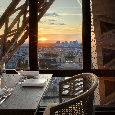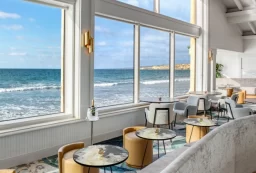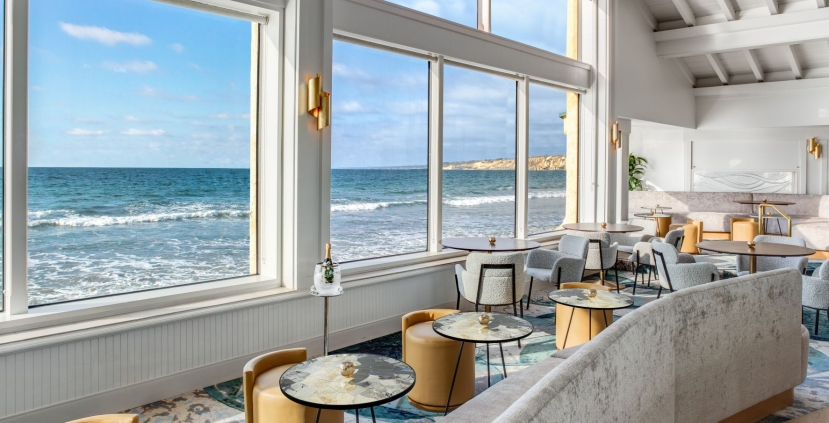
Numerous five-star destination resorts line the Pacific Coast. However, only a few of them strike a perfect balance between modern luxury and historic character. The Surf & Sand Resort and Spa in Laguna Beach and La Jolla Beach & Tennis Club in La Jolla, just outside of San Diego, embody this commitment to authenticity. Both have and continue to attract generations of travelers, remaining true to their origins while integrating thoughtful upgrades to aesthetics and amenities that seamlessly complement land and sea.
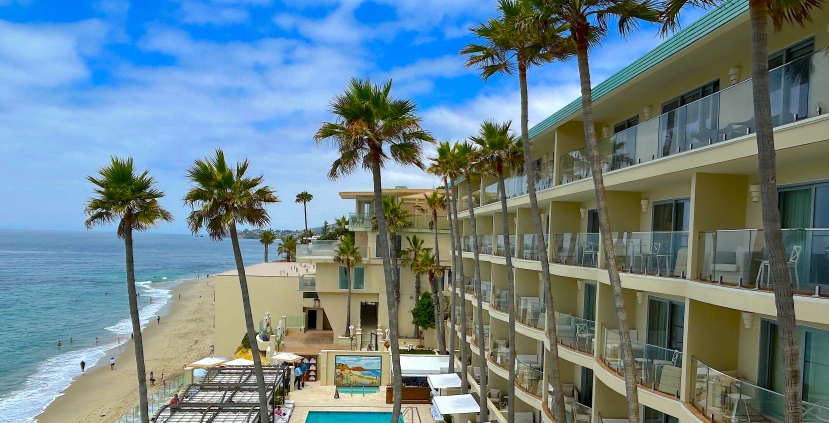
Each property is home to an acclaimed signature restaurant that takes California cuisine in delightful new directions. The Surf & Sand’s Splashes and the La Jolla Beach & Tennis Club’s The Marine Room are led by executive chefs who recognize that to expand the scope of “California Cuisine,” it is necessary to bend a few rules to keep flavor profiles and presentation interesting. While the menus offer salads, seafood, and chops, their interpretations draw repeat visits from both local customers and hotel guests for good reason.
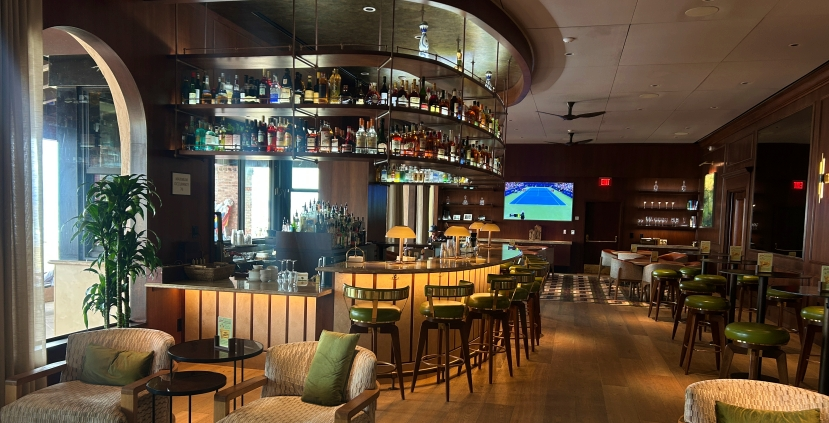
Each restaurant boasts a multi-sensory “dinner and a show” immersion in spaces designed to reveal the Pacific Ocean as a large-scale stage where Mother Nature delivers memorable performances during golden hour and high tides. Their respective lead chefs, meanwhile, prove that less is more through subtle yet dramatic takes on dishes tapping into California’s agricultural and aquatic bounty.
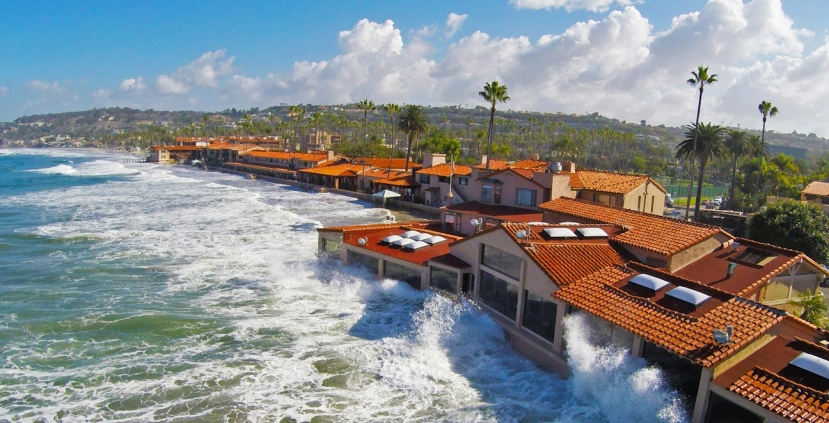
The nearly 100-year-old family-owned La Jolla Beach & Tennis Club (above) continues to demonstrate that members-only exclusivity can be both down-to-earth and luxurious. Across the 21-acre, 90-room beachside resort, private club members and short-term guests who make special arrangements for a stay have access to 13 championship tennis courts, five pickleball courts, a nine-hole Par-3 golf course, two swimming pools, one of Southern California’s only private beaches, and three oceanfront restaurants and cocktail lounges, including the exquisite Walnut Lounge. The club is known worldwide as the site of numerous amateur and professional tennis tournaments since the 1940s, drawing the world’s top tennis professionals.
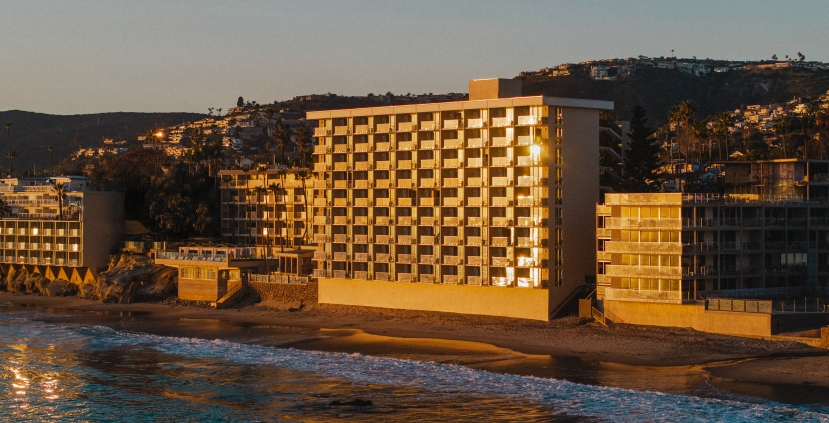
While the Surf & Sand Resort has epitomized Orange County beachfront lodging since its 1948 debut, its recent remodel ushers in a new era of modern luxury. The property’s redesign celebrates Laguna Beach’s dual identity as a fine arts hub and outdoor destination. All 165 guest rooms and suites have ocean views, private balconies, and luxe amenities. The entryway draws one in to the lobby lounge, tastefully outfitted with a curated collection of museum-caliber artwork from Dale Chihuly, Ran Ortner, Eric Zener, Geoffrey Gersten, and Kelsey Irving. The revitalized resort pool, Bella Vista Terrace, and new Aquaterra Spa are forged with a Mediterranean-meets-California Coastal architecture that beautifully frames the prime piece of coastline.
"I love international flavors, and try to use unique ingredients that people tend to be unfamiliar with. I love trying new foods so I want to give our guests the opportunity to try something new and interesting.-- Chef de Cuisine Derek DuPree, The Marine Room, La Jolla, CA"
Even with a fleet of devoted members, some stretching back generations, upgrades are always in progress, including the latest $60 million resort-wide overhaul. Newly minted Executive Chef Ananda Bareño and Director of Food & Beverage Amanda Cohen are overseeing the property’s newest dining concepts, including the La Jolla Shores Hotel, its open-to-the-public sister property. Derek DuPree, The Marine Room’s Chef de Cuisine, focuses on expanding the boundaries of what defines California Coastal fine dining. There is no denying that a major selling point is the views from floor-to-ceiling windows that frame the Pacific’s splendor during High Tide Dinners and brunches. However, adapting to the changing tastes of guests and selective locals is no small feat.
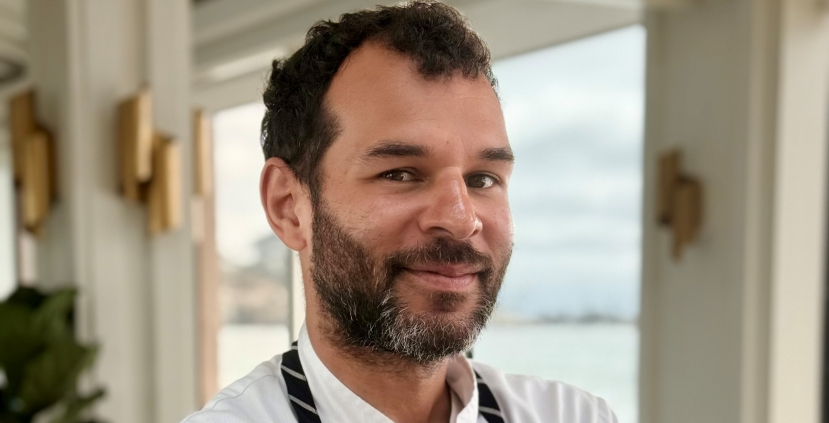
DuPree’s vision for the menus at the Marine Room, opened in 1941, reaffirms its cache as one of the state’s fine-dining standouts through subtle updates of “special occasion” restaurant offerings and cocktails. He points to Southern California’s year-round bounty and ever-changing embrace of global flavors and influences as a source of inspiration, even while he takes care to respect the ingredients for each recipe.
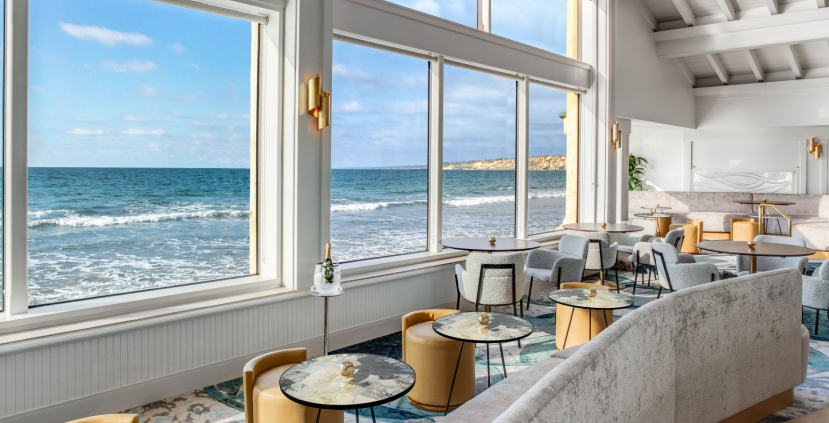
“Along with new and interesting ingredients, I love going to local markets and finding the highest quality local produce that I can find,” DuPree explains. “I try to blend tradition with creativity. I love international flavors. I try to use unique ingredients that people may be unfamiliar with. I love trying new foods, and I want to give our guests the opportunity to try something new and interesting.”
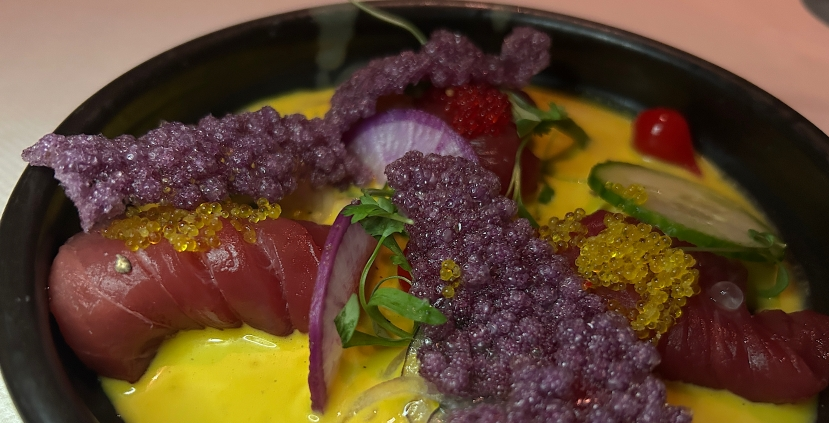
DuPree’s varied experience has found its way to The Marine Room. He refined his skills at The Le Cordon Bleu Culinary Institute in 2010 and built his resume at Moto in Chicago and Eleven Madison Park, Commerce, and Betony in New York City. After working his way up through the ranks, he became the Executive Chef at the Empire Hotel, which led to his appointment as Chef de Cuisine at the Arlo Hotel. He returned to Chicago to serve as Executive Chef of Bernie’s Chicago. During the pandemic, he found himself opening two restaurants in Cyprus. Since 2022, Dupree has called San Diego home, where he brought his skills to the Huntress Steakhouse and, later, the Marine Room.
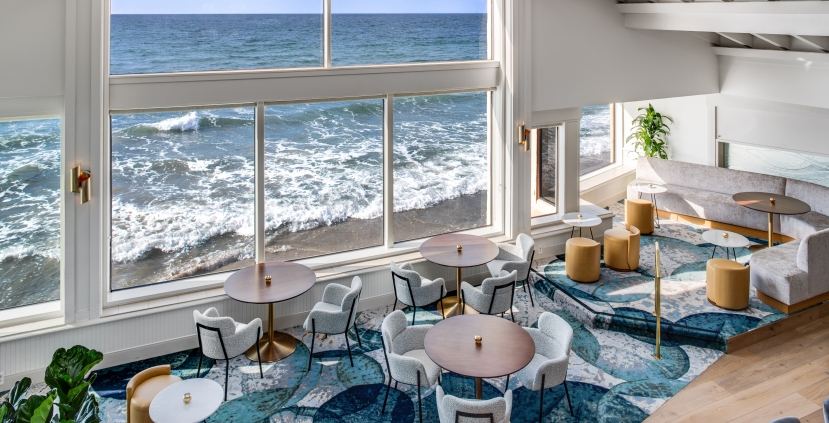
Not surprisingly, innovation in California cuisine often depends on the strong relationships a chef has with local farmers and protein purveyors. By extension, creating recipes and menus is a team effort, and the entire Marine Room culinary team plays an active role in perfecting recipes, as well as wine and cocktail pairings. “Our general manager and bartenders usually create pairings based on whatever dishes I come up with. It typically starts with the food, and they take it from there,” he says.
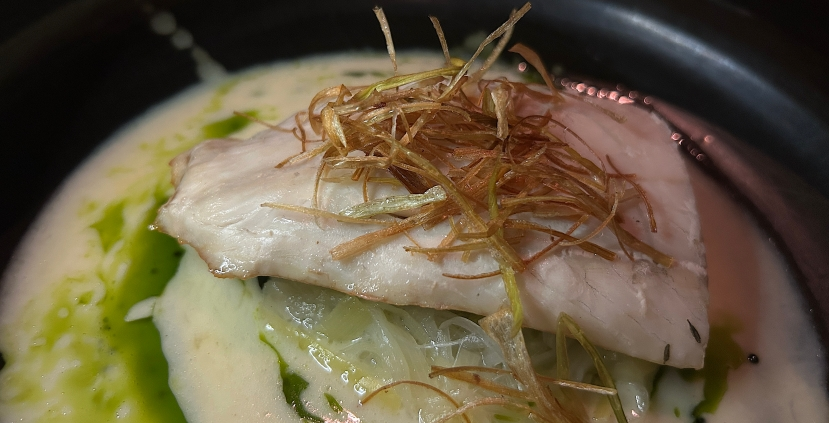
Some of The Marine Room’s most talked-about creations include “Tasmanian Ocean Trout” with coconut salsa macha and cassis chayote; “Branzino” with melted leeks, beurre blanc, parsley oil, and tobiko; “Cascade Creek Lambchops” with citrus labneh and mint chimichurri; Japanese A5 Wagyu Strip Steak with onion brûlé and potato pavé; and a simple but stellar “Lamb Ragu Pappardelle.” Peruvian Crudo and the Salmon Mosaic, meanwhile, are among her more ambitious, globally-influenced creations.
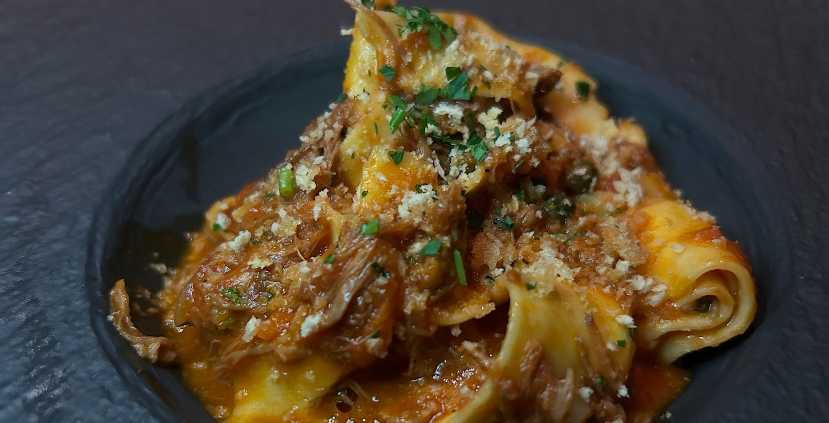
“People care more about where their food is coming from,” DuPree affirms. “When I first started cooking, nobody asked where things were from. Now it’s pretty common. Where the restaurant is located also makes a big difference, and La Jolla has a discerning clientele.”
"“Splashes’ kitchen is a melting pot. Our staff is made up of creative people from different parts of the world. This is why I am a firm believer in involving the entire team as we develop new recipes and improve existing ones with what’s in season.”-- Executive Chef Ron Fougeray, Splashes, Laguna Beach, CA"
The recent remodel of Splashes, Surf & Sand’s signature restaurant, visually brightens and opens out the intimate space. The indoor section’s focal point is a custom-designed Chihuly chandelier forged with hand-blown glass elements inspired by the sea. While it features floor-to-ceiling windows and is further extended with the subtly nautical Splashes Bar, the dramatically staged outdoor section makes the most of the Pacific and sunsets as well as the vision of Executive Chef Ron Fougeray.
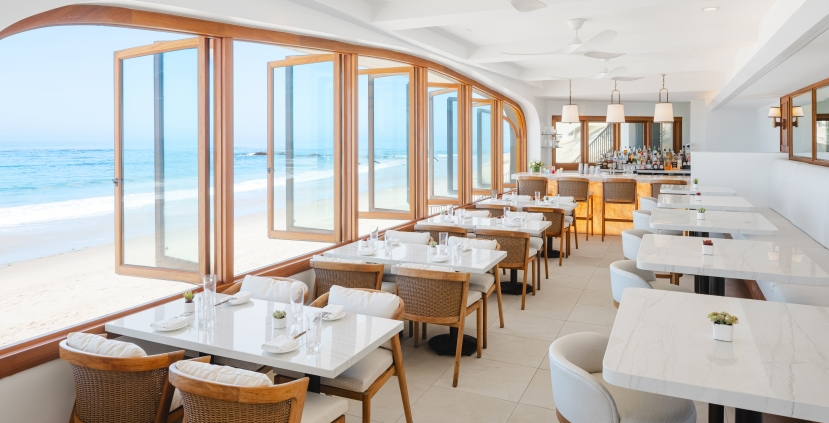
Since 2015, the Philadelphia-bred Fougeray has pushed local cuisine forward by applying techniques mastered in his early East Coast career while using Southern California’s year-round bounty. He describes his kitchen as “a bit of a melting pot with people coming from different parts of the world.” He credits his success over the past ten years to the input of his team when tasting and experimenting together to ensure the recipes and menus are just right.
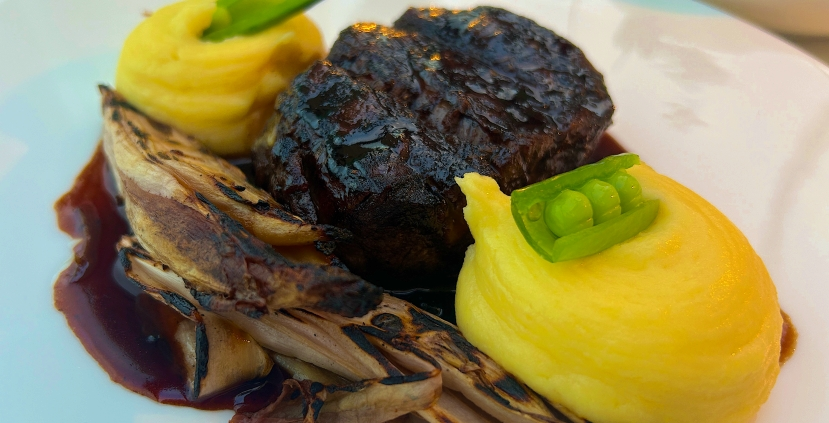
“I think ‘produce forward’ is one of the best ways to describe California cuisine, especially as Californians are particularly conscious of what they put in their bodies,” he says. “They want to know where their broccoli is grown, the farm where our milk and eggs are sourced from, and if the seafood and fish are wild-caught or farm-raised. The fact that we keep track of all of these things means we’re invested in our guests’ enjoyment and health.”
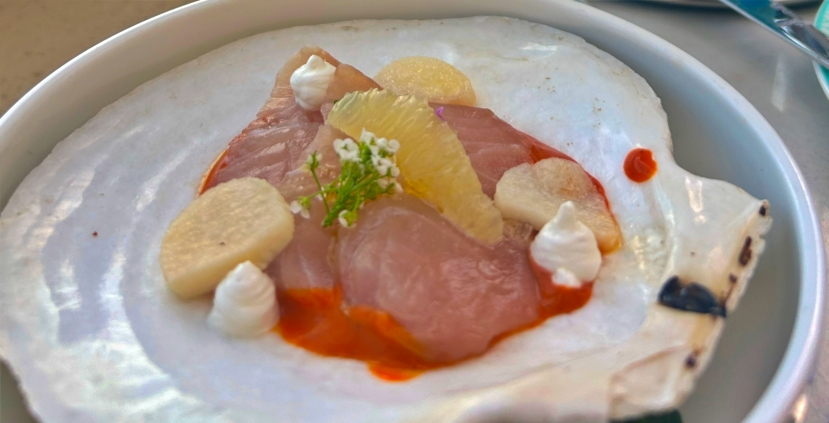
The dinner menu features dishes with a classical foundation modified with whatever is in season and an acknowledgment of Southern California’s ever-expanding global palate. Fougeray observes that while visitors indulge during their vacations, locals get adventurous with such ambitious starters as the Spanish Octopus adorned with forbidden rice crisp, calabrian chili, and white bean hummus; Corn & Crab Risotto, and sides such as the “Madras Curry Roasted Carrots.”
“Letting an ingredient shine is extremely important, and there is beauty in simplicity,” he continues. ‘Some chefs continue to add components to dishes when it’s not necessary, while I aim to create the ‘wow’ factor by showing the work we put into a recipe on the plate, but not adding so many flavors that some of the ingredients get lost. We want the guest to ask, ‘What is that?’ or ‘How did you do that?’
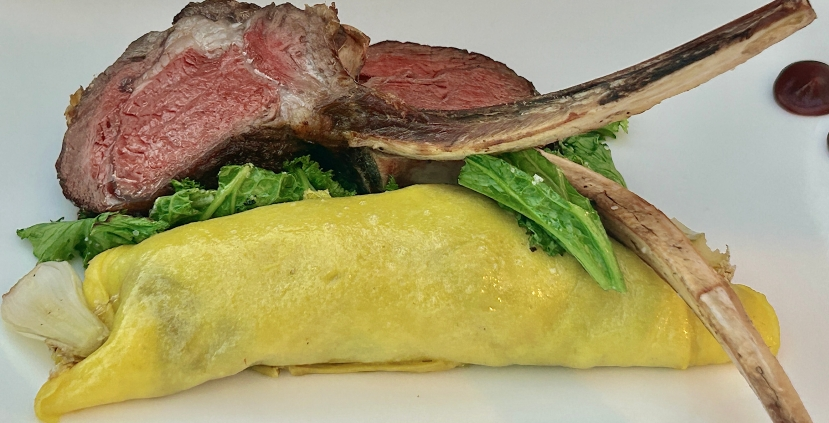
Case in point is his “Rack Of Lamb,” wrapped in a turmeric crêpe, caramelized onion, mustard greens, and cherry gel. The Filet Mignon is modernized through culinary techniques (parsley root cloud, braised endive, sugar snap, black garlic demi glaze) that do not compromise the natural flavors. Fougeray then recalls that when he arrived in 2015, recipe packets were issued to the staff for every menu and dish. Even with Splashes’ existing reputation, he decided to close the book on that approach and replace it with diverse voices and input to the development of dishes and menus.
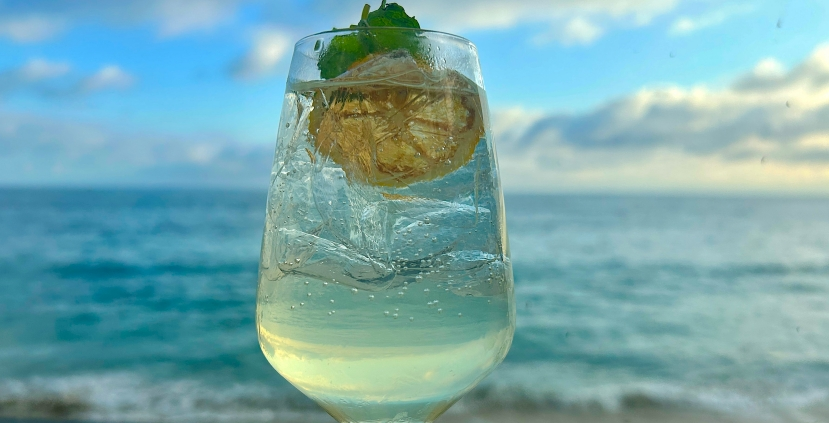
“We have evolved to come up with dishes that, even with the same quality ingredients, most people cannot exactly recreate at home,” he affirms. “It’s what brings people back to Splashes, knowing they are going to get a different dining experience every time.”















